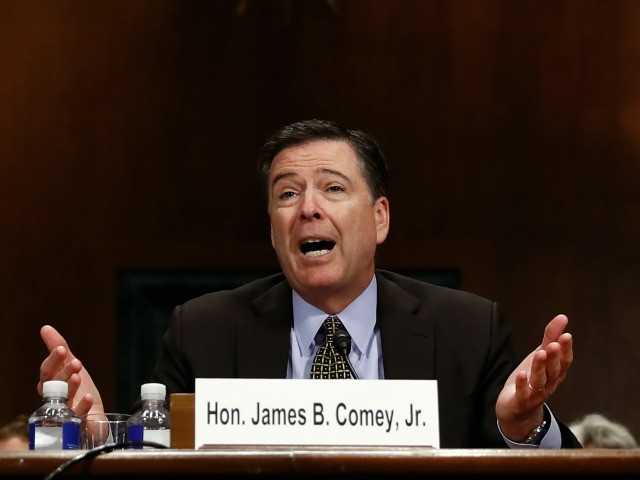The Washington Post and the New York Times have each published new versions of the story of how former FBI director James Comey was fired earlier this week.
Each of the articles, published late Wednesday, seeks to explain more details about how President Donald Trump arrived at his decision — and each aims to catch the White House in alleged contradictions between its official account of how the decision was made, and how it actually happened.
The Post story characterizes Trump’s decision as a “sudden” one, driven by “anger and impatience,” and by a desire to stop the FBI’s investigation into supposed connections between the Trump campaign and Russia. The Post says that President Trump initiated a meeting with Attorney General Jeff Sessions and his deputy, Rod Rosenstein — not the other way around. It portrays them as anxious to fulfill “the boss’s orders,” and suggests that Trump felt events were “spiraling out of his control.” Perhaps the most startling claim is that Rosenstein threatened to resign after the narrative emerging from the White House on Tuesday evening cast him as a prime mover of the decision to fire Comey.” The Post relies on a single source — “a person close to the White House” for that rather sensational claim. Interestingly, the Post story also portrays the testimony of former Acting Attorney General Sally Yates on Monday as damaging to the White House — although there were no new details revealed about the Russia investigation.
The Times story is a bit more circumspect, saying Trump’s decision on Comey had less to do with fear of the Russia investigation and more with irritation at Comey’s political grandstanding. “He was particularly irked when Mr. Comey said he was ‘mildly nauseous’ to think that his handling of the email case had influenced the election, which Mr. Trump took to demean his own role in history,” the article claims. Curiously, the Times story claims that White House adviser Steve Bannon was a dissenting voice — which contradicted earlier speculation by a Times reporter. The Times does not go as far as the Post in concluding that Trump initiated the Department of Justice review that led to Comey’s firing, leaving the order of events a bit more vague and including the White House’s explanation.
The two accounts agree that there was near-unanimity in the White House about firing Comey, and that the White House was surprised by the public backlash. Neither suggests an imminent FBI breakthrough on the Russia probe.
The articles set the stage for another contentious press briefing in the White House today, where Deputy Press Secretary Sarah Huckabee Sanders will be questioned about her account from the day before. Operating on the Watergate template, and evidently hoping for a similar conclusion, the media will likely endeavor to suggest that “the cover-up was worse than the crime” — even though there was no cover-up, and no evidence of a crime.
Joel B. Pollak is Senior Editor-at-Large at Breitbart News. He was named one of the “most influential” people in news media in 2016. He is the co-author of How Trump Won: The Inside Story of a Revolution, is available from Regnery. Follow him on Twitter at @joelpollak.
